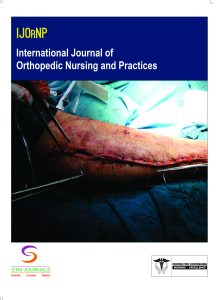
Nandini Mannadath,

Jayan C.,
- Assistant Professor College of Health and Sports Sciences, University of Bahrain Zallaq Bahrain
- Professor (Rtd.) University of Calicut Kerala India
Abstract
This study outlines the methodology and findings of a study that aimed to create a tool for assessing adolescents with oral facial clefts’ levels of beauty satisfaction. The development of this tool includes a well-detailed literature survey, focus group discussion with adolescents with oral facial clefts, and the wide process of consultation with the cleft surgeon, orthodontist, pediatrician, and clinical psychologist. Further test construction includes planning of the scale, item preparation, try out, scoring, and item analysis. The beauty satisfaction scale consists of 20 statements in a five-point Likert scale which consists of both positive and negative items. for beauty satisfaction with the help of the guide. This tool is a promising tool in the field of oral-facial cleft with the utility of assessing the perception of beauty satisfaction among the cleft population.
Keywords: Beauty satisfaction scale, adolescent, cleft lip and palate, oral facial clefts
[This article belongs to International Journal of Orthopedic Nursing and Practices(ijornp)]
References
Prokhorov AV, Perry CL, Kelder SH, Klepp KI. Lifestyle values of adolescents: results from Minnesota Heart Health Youth Program. Adolescence. 1993;28(111):637–47.
Mercado A, Russell K, Hathaway R, Daskalogiannakis J, Sadek H, Long RE Jr, et al. The Americleft study: an inter-center study of treatment outcomes for patients with unilateral cleft lip and palate part 4. Nasolabial aesthetics. Cleft Palate Craniofac J. 2011;48(3):259–64. doi: 10.1597/09-186.1.
Hunt O, Burden D, Hepper P, Johnston C. The psychosocial effects of cleft lip and palate: a systematic review. Eur J Orthod. 2005;27(3):274–85. doi: 10.1093/ejo/cji004.
Pope AW, Ward J. Self-Perceived Facial Appearance and Psychosocial Adjustment in Preadolescents with Craniofacial Anomalies. Cleft Palate Craniofac J. 1997;34(5):396–401. doi: 10.1597/1545-1569(1997)0342.3.CO;2.
Feragen KB, Særvold TK, Aukner R, Stock NM. Speech, language, and reading in 10-year-olds with cleft: associations with teasing, satisfaction with speech, and psychological adjustment. Cleft Palate Craniofac J. 2017;54(2):153–65. doi: 10.1597/14-242.
Baby SC, Nandini M. Application of biopsychosocial model in nursing care for a child with oral facial clefts. Int J Pediatr Nurs. 2016;2(3, September-December):177–9. doi: 10.21088/ijpen.2454.
2316.11.
Nandini M, Jayan DC. Dent concern assess among Adolesc oral facial clefts. Indian J Appl Res. 2018;8(2):31–2.
Shute R, Owens L, Slee P. You just stare at them and give them daggers: nonverbal Expressions of Social Aggression in Teenage Girls. Int J Adolesc Youth. 2002;10(4):353–72. doi: 10.1080/
2002.9747911.
Broder HL, Smith FB, Strauss RP. Habilitation of patients with clefts: parent and child ratings of satisfaction with appearance and speech. Cleft Palate Craniofac J. 1992;29(3):262–7. doi: 10.1597/1545-1569_1992_029_0262_hopwcp_2.3.co_2.
Bull R, Rumsey N. The Social Psychology of Facial Disfigurement. New York: Springer; 1988. doi: 10.1007/978–1–4612–3782–2.
Engel GL. The need for a new medical model: a challenge for biomedicine. Science. 1977;196(4286):129-36. doi: 10.1126/science.847460.
Kapp K. Self-concept of the cleft lip and or palate child. Cleft Palate J. 1979;16(2):171–6.
Kleve L, Rumsey N, Wyn‐Williams M, White P. The effectiveness of cognitive-behavioural interventions provided at Outlook: a disfigurement support unit. J Eval Clin Pract. 2002;8(4):387–95. doi: 10.1046/j.1365-2753.2002.00348.x.
Kummet CM, Moreno LM, Wilcox AJ, Romitti PA, DeRoo LA, Munger RG, et al. Passive smoke exposure as a risk factor for oral clefts – A large international population-based study. Am J Epidemiol. 2016;183(9):834–41. doi: 10.1093/aje/kwv279.
| Volume | 01 |
| Issue | 02 |
| Received | December 28, 2023 |
| Accepted | December 30, 2023 |
| Published | January 9, 2024 |


